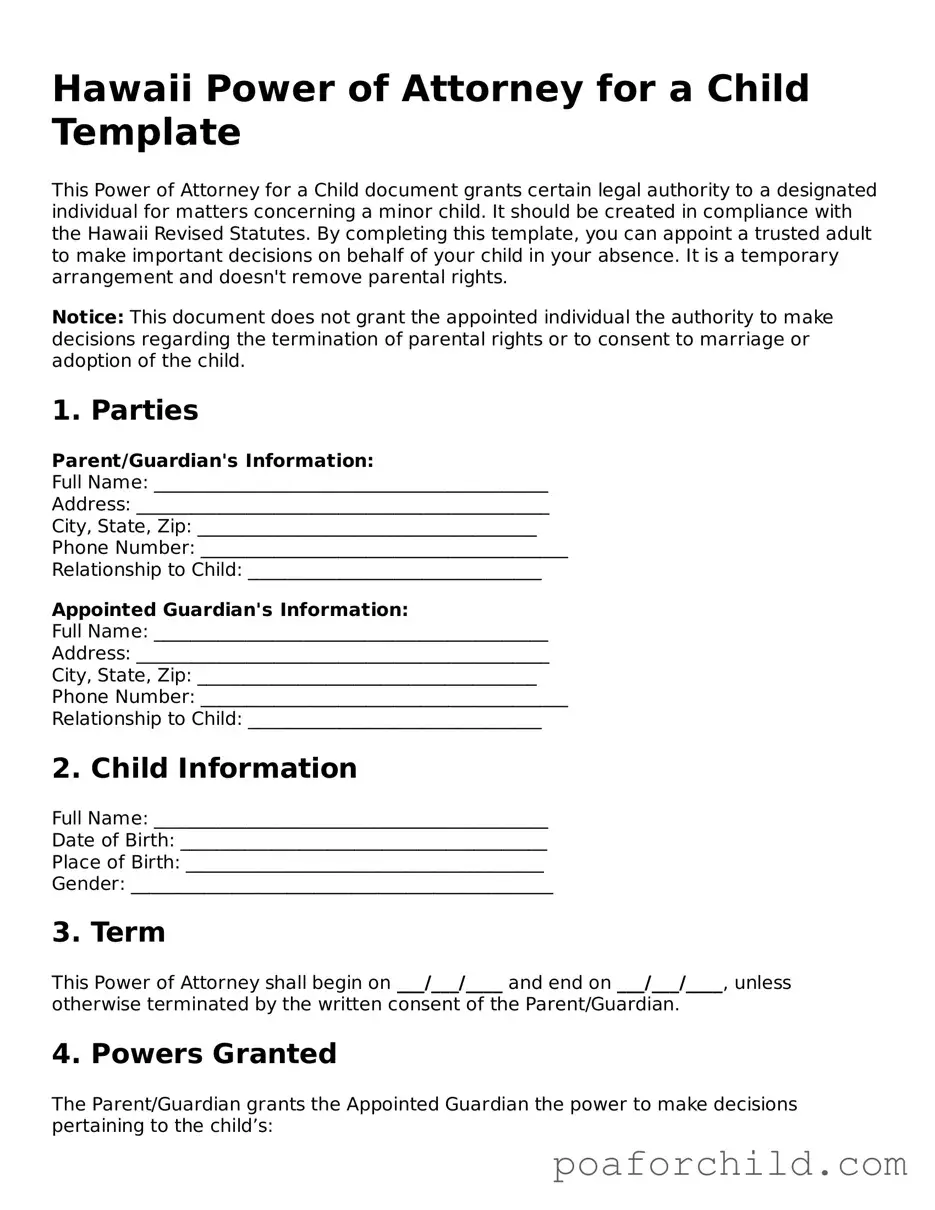Detailed Guide for Using Hawaii Power of Attorney for a Child
Filling out a Power of Attorney for a Child in Hawaii is an important step for parents or guardians who wish to grant another individual the authority to make decisions on behalf of their child. This process can ensure a child's needs are met when the parent or guardian cannot be present due to various circumstances. By following the steps outlined below, you can complete this form confidently, knowing you are taking a significant step towards protecting the well-being of your child.
- Start by gathering all necessary information, including the full legal names and addresses of the parent(s) or current legal guardian(s), the agent (the person being granted the power of attorney), and the child.
- Read through the Power of Attorney for a Child form entirely before filling anything out. This will help you understand all the sections and the type of information you are required to provide.
- Enter the date on which the document is being filled out at the top of the form.
- In the section designated for the principal (the parent or legal guardian), fill in your full legal name, address, and contact information.
- In the space provided for the agent, input the full legal name, address, and contact details of the person you are granting the power of attorney to.
- Specify the child's full legal name along with any important information such as date of birth and address.
- Detail the powers you are transferring. This includes specifying the decisions the agent is allowed to make on behalf of your child, such as educational choices, medical care decisions, and participation in extracurricular activities. Be as specific as possible to avoid any confusion.
- If there are any specific dates or conditions under which the power of attorney begins and ends, clearly mention those. For instance, you may wish for the power to only be in effect if you are out of the country or incapacitated.
- Both the principal(s) and the agent must sign the form in front of a notary public to validate the document. Ensure that a notary public is present to witness the signatures and affix the official seal.
- After the form is notarized, make copies for each party involved. The original should be given to the agent, while the parent(s) or legal guardian(s), and possibly the child’s school or medical providers, should hold copies.
Once the Power of Attorney for a Child form is filled out and notarized, it grants the agent the authority to act on behalf of the child in the specified matters. It's essential to communicate openly with everyone involved, including the child if appropriate, to ensure they understand the arrangement and its implications. Should circumstances change, remember that this document can be revoked or amended as needed, provided all parties are in agreement and the changes are properly documented and notarized.
